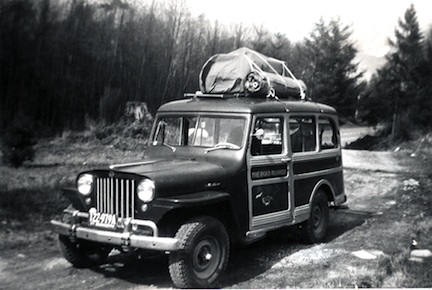|
Entertainment Magazine: Arizona's Buried Treasures
This is an excerpt from Ron Quinn's adventure book on Searching for Arizona's Buried Treasures," now available on Amazon.com. Treasure Hunting Odyssey BeginsAuthored by Mr. Ron Quinn Treasure hunting in Southern Arizona near Tumacacori with Ron Quinn, brother Chuck, and good friends and partners, Roy Purdie and Walt Fisher is a great book for novice or seasoned treasure hunters. From page 12 of "Searching for Arizona's Buried Treasures"
In March 20, 1956 we bid farewell to family and friends, and left on the first leg of this extraordinary journey, promising our folks to write several times a month. Chuck kept the diary and his first entry read:
Little did we realize what a memorable trip it would be!
After four days and 1,500 miles we arrived in Phoenix, Arizona. We had ordered a metal detector from Gardner Electronics, a small company located there. The management told us it wouldn’t be ready for several weeks. We asked them to ship the machine to Arivaca when ready. We decided to relax a day after the long weary ride to Phoenix. That evening we camped at Fish Creek. The area borders the Superstition Mountains. Home of the “Lost Dutchman Mine.” Chuck and I would eventually explore these famous desert mountains, but not until the following year. After a day’s relaxation we headed for Winkleman, a small mining town beside the San Pedro River. Both of us were intrigued by a story entitled, the “Lost Yuma Ledge.” This gold deposit is believed to be hidden east of this river, just south of the town. Many have searched, but all have failed. We decided to spend several days exploring the area before continuing on toward Tucson. After locating Romero Wash we followed it some three miles west. Camp was established several yards south of the sandy arroyo. The region was carpeted with cholla, also known as “jumping cactus,” the most dangerous of the cactus group. Their thin sharp needles can easily penetrate a boot. The area was true desert, made up of fine sand, broken shale and periodic outcroppings of conglomerate. Rattlesnakes were no doubt lurking among rocks scattered across the uneven terrain. The hills supposedly harboring this gold ledge rose abruptly toward the west, all craggy and threatening. The following is a condensed version of the remarkable tale of found and lost gold. A frontiersman, known only as Yuma, began trading among the Indians. He was well liked and trusted by most and eventually married an Apache girl. While living among the Arivaipa Apache, he heard rumors about where the Indians obtained gold for trading. Yuma was eager to learn this secret, and after considerable persuasion, induced the Chief to show him the location. Accompanied by the chief they traveled by horse across the barren hills. After riding some nine miles they reached a long ridge west of the San Pedro River. Before them in a crater-like depression was an outcropping of rose quartz, rich in coarse gold. After obtaining several pounds of the rich ore, the Chief carefully covered it with dirt and rock. He told Yuma never to return after this first visit, or he’d be killed. Arriving in Tucson, Yuma showed the ore to a friend named, Crittenden, whom he had known for years. They decided to return to the Arivaipa country and sample the discovery thoroughly. After traveling about ten miles north of Fort Grant, which is near the San Pedro River, they camped beside it and waited till morning. After searching the following day, the ledge was found. Not seeing any Apaches, they removed some forty pounds of gold ore. This ore brought to Tucson produced $1,200 in gold. Knowing the Apaches might be on the lookout, they decided it was too dangerous to return at the present and develop the mine. Yuma returned to trading and Crittenden continued his freighting business. Months later, Yuma and his wife were killed by renegade Apaches near Growler Pass located in central Arizona. Crittenden tried returning alone and was never seen again. He was apparently killed also. The Apaches never revealed their secret to another white man, and today it’s doubtful any living Indian knows the location. The rich gold ore still lies among the lonely hills guarded by the desert itself. For three days we searched the hazardous terrain. All that was found were several pieces of rose quartz indicating we were in the correct locale. We made plans to return after the detector arrived and search once more. The days were exceptionally warm, but the temperature dropped dramatically at night. That evening I stepped from our tent and gazed upon this awesome yet beautiful landscape. The full moon was slowly rising over Sombrero Butte, covering the desert floor in an eerie yellow glow. During the day the deserts appear dangerous and unfriendly to those entering its harsh domain. At night it takes on a quiet peaceful solitude. Occasionally, a lone coyote would make its presences known by its mournful howl. Yes, we had finally arrived in Arizona, and wondered what the next two years would bring. After breaking camp the following morning we headed for Tucson, some seventy miles away. After checking into a motel for several days, we spent countless hours researching stories at the Arizona Historical Society. Afterward we visited the museum at the University of Arizona. Their mineral display supposedly held a sample of Yuma’s gold, but nobody knew of it. © 2013-2016 Entertainment Magazine. All rights reserved. |
